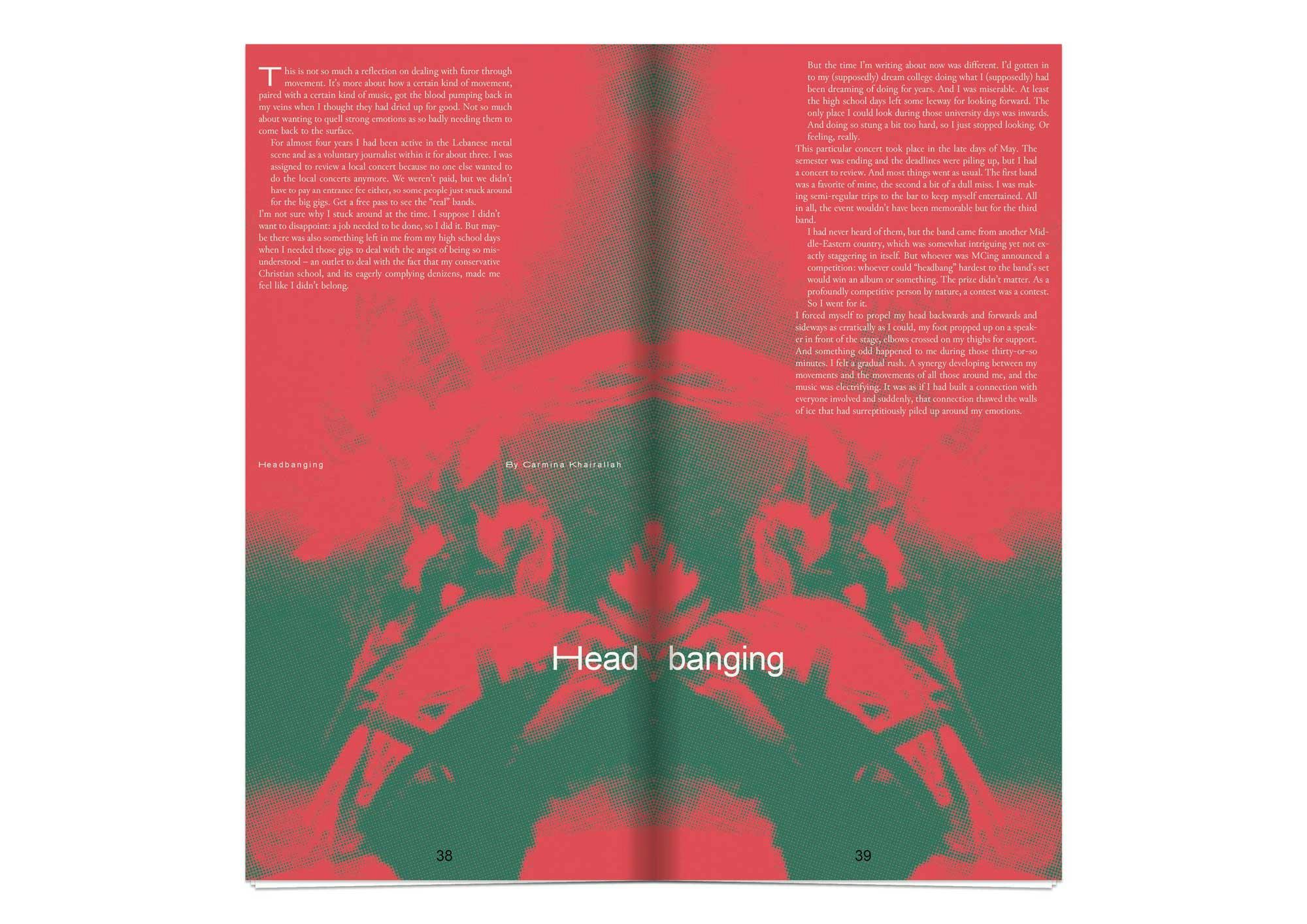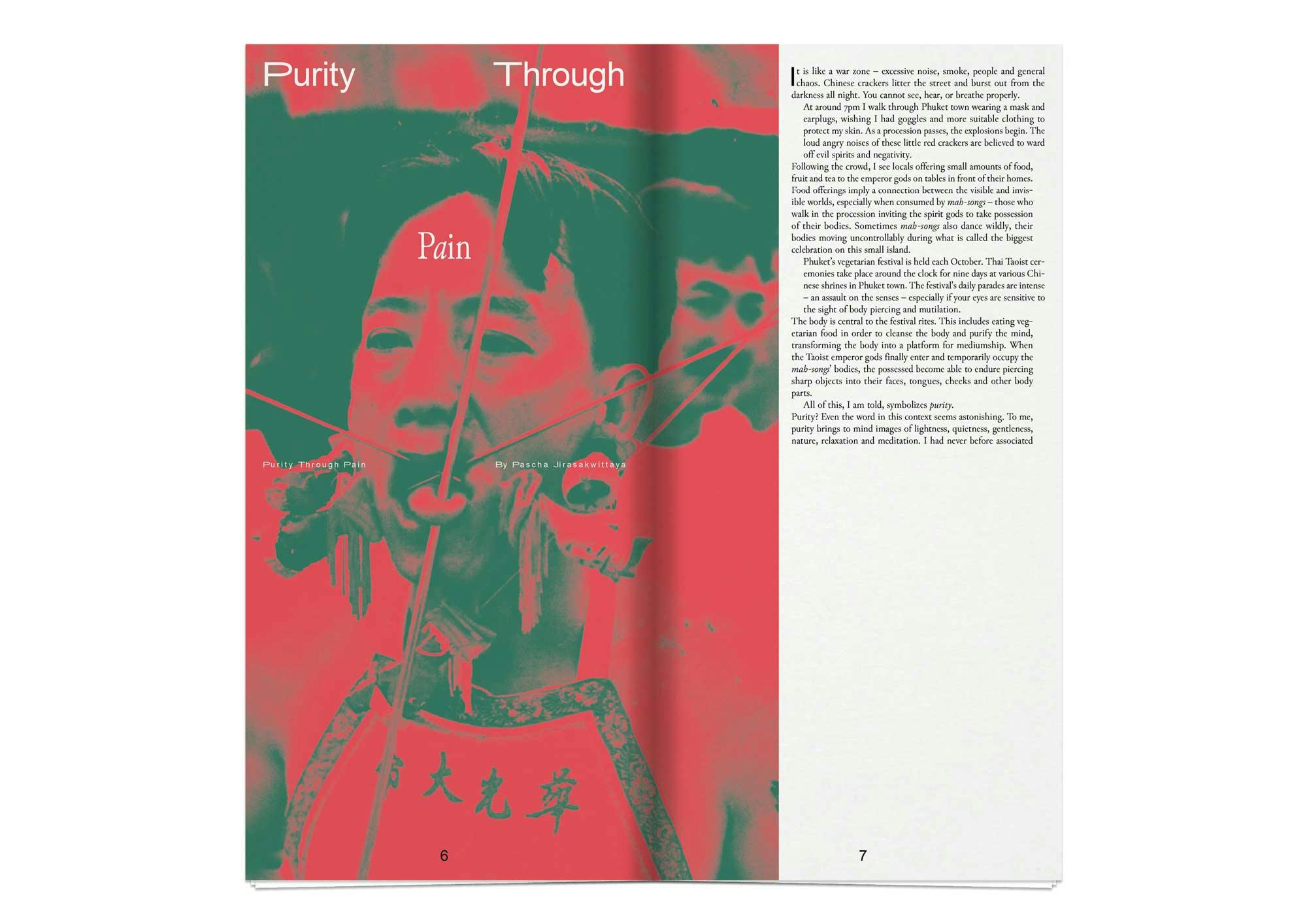Death, rebirth and maternal rage

Published in Beirut, A Dance Mag was one of the most original magazines to launch last year. The first issue — themed around transcendence — was inspired by the whirling practices of Sufi Dervishes. All about movement, and its potentiality to fold us out of ourselves into some larger consciousness, one memorable essay was a first person account of a ketamine epiphany on a Berlin dance-floor (“Do you really think that death is the end? But the movement… feel it. The movement is infinite.”)
This time, A Dance Mag is spiralling inwards. Themed Furore, the inspiration is flamenco, the form that demands, above all others, that its performer confront and channel their rage. Anger is a thread that runs through the issue: one fascinating piece figures maternal rage as a sort of gift, semi-divine, passed down to a dancer from her goddess. Another tells the story of a piercing ritual in Phuket, where Taoist emperor Gods are understood to enter and occupy their follower’s bodies, leaving them pure enough to endure the piercing of long sticks into their faces and tongues.
The magazine’s attention to intense emotion — this idea that dance is transformative because it elicits such emotion — feels unusual. Co-founder Jana Al Obeidyine talked to us about death, and rebirth, and the political significance of anger.
We love the theme: Furor. Can you tell us why you chose it?
Every issue of A Dance Mag takes a theme inspired by a different dance form or bodily practice. When we began work on the magazine, we decided to start with a practice rooted in the Middle Eastern region where the publication is made, so we looked at the whirling practice of Sufi Dervishes. For the second issue I wanted a smooth transition into a different ‘world’; Flamenco dance felt right, since it’s an art form that was born in Andalusia during Arab rule, and it also has a transcendental aspect, but of a different nature.
Whirling has an aerial feel while Flamenco has a fiery feel. Both experiences lead to a transformation. Whirling leads to a sense of wholeness and unity, while Flamenco is said to lead to a sense of death and rebirth. ‘Furor’ seems to reflect that fiery aspect of Flamenco, while speaking to both the rage and the ecstasy experienced by the dancers.
This line, from the editor’s letter is striking: “[the Furor issue] tells the stories of people brave enough not to shy away from their inner fears, frustrations and anger, but confront, own and channel them”. What do you think can be gained from tapping into our rage?
I think that tapping into the rage makes us healthier on an individual and a collective level. It is only by acknowledging and accepting those types of emotions that we become able to control and channel them towards positive ends. Repressing, and suffocating our feelings inside our bodies eventually lead those feelings to resurface, if not in bad judgments and actions, then definitely in the form of illness. Sometimes I think that the major cultural and political challenges we are facing today worldwide are rooted in accumulated emotional repressions rather than in ideological differences.
One piece,’Bless Me Mother With Your Rage’ explores maternal rage, passed down between mothers and daughters, and also between female goddesses and their followers. What role does that rage have to play in dance, and life?
I am not sure I have the answer to that question. The Furor issue turned out to be a very feminine issue. Most male voices in Furor speak from an observer’s point of view. At first I thought that could be because in many contexts men expressing their anger is culturally inappropriate, but then I noticed that even mythological and historical figures in the issue are all female figures from different geographical areas. It’s intriguing.
In your editor’s letter you talk about the difficulty of writing about dance: “Transforming such speechless moments into timeless narratives is a challenge that A Dance Mag has chosen to accept.” Why have you chosen to accept that challenge?
Whether we are dancers or spectators, what we experience through dance is sometimes too intense to be put into words. So when it comes to writing about dance, we find it easier to intellectualise what we have experienced rather than simply sharing the feeling of it. But to me personally, the value of dance (and art) resides in the feeling it evokes — the way it moves you. That’s why it is important to me that A Dance Mag shares experiences rather than analysing and reviewing performance. The challenge is that we are not used to writing about dance from an experiential point of view. But we will get there.











